The majority of people, when thinking of angels, envisage gentle creatures in white robes, with a halo and a pair of large feathered wings. However, biblically correct angels are anything but Seraphim of serenity and comfort. In the Bible, angels are depicted as amazing and at times terrifying beings, which fully deny our concept of something beautiful and orderly. These beings of heaven, colorfully and sometimes confusingly described, speak to a godliness incomprehensible in majesty and mystery.
In this blog, we take a deeper look at the concept of biblically accurate angels: their depictions in the Bible, mainly derived from the book of Ezekiel, and discuss how these descriptions have inspired modern biblically accurate angels animation. By the end, you will understand these heavenly creatures and how much deep symbolism they bear within Christian theology.
The Origins of Biblically Accurate Angels

The Bible speaks a lot about angels, both in the Old and New Testaments. However, the most striking descriptions come from the Old Testament, because the prophets Ezekiel and Isaiah gave detailed accounts of their visions of these heavenly beings.
By biblically correct angels, refer to those scriptural descriptions that usually show them as multi-winged, multi-faced beings with eyes covering their bodies. These angels are not the benign, anthropomorphic figures so popularized in Western art and literature but are instead beings of immense power and mystery.
It is from the books of Ezekiel, Isaiah, and Revelation that the most well-known accounts of these biblically correct angels have been derived. Each describes different types of angels in their unique characteristic natures and roles in order within the divine.
Ezechiel’s Vision: The Living Creatures
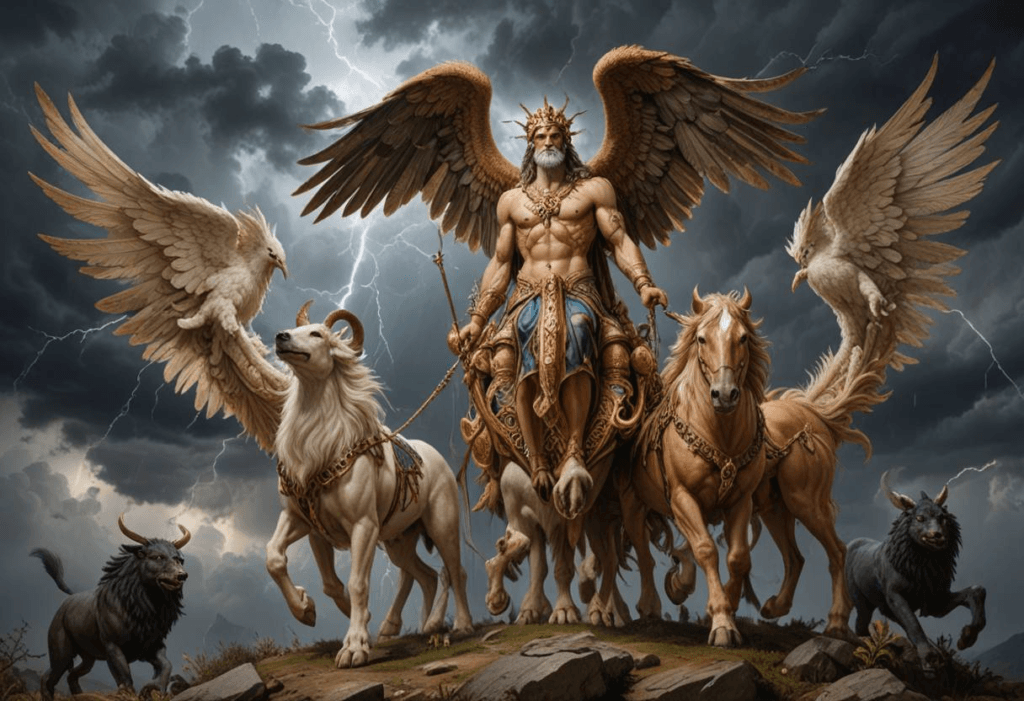
By far, one of the most complex descriptions of biblically correct angels is that derived from the book of Ezekiel. Ezekiel, in Ezekiel 1, saw a vision of four living creatures, each with four faces and four wings. These were the faces of a human, lion, ox, and eagle that comprised four aspects of God’s creation. The winged beings—aside from being referred to as Cherubim—have eyes everywhere on them, showing their capability for seeing in all directions and also their appointment as guardians of God’s glory.
The movement of the angels that Ezekiel saw, which were biblically correct, is described by not only their appearance but also their movement. They go in straight directions without turning, following the spirit. Movement is accompanied by the sound of rushing waters and the roar of an army, which was meant to show off might and who they were representing: God.
Ezekiel’s vision is at the same time a terror and a wonder and carries something of the otherworldly character of these biblically correct angels. Forcing a complete reconsideration of what we conventionally think of as an angel, this invites us into the greatness and mystery of the Divine.
Curranty in trending : Finding the Best Car Insurance: Top Companies, Rates, and 7 Ultimate Expert Tips
Seraphim: The Fiery Ones
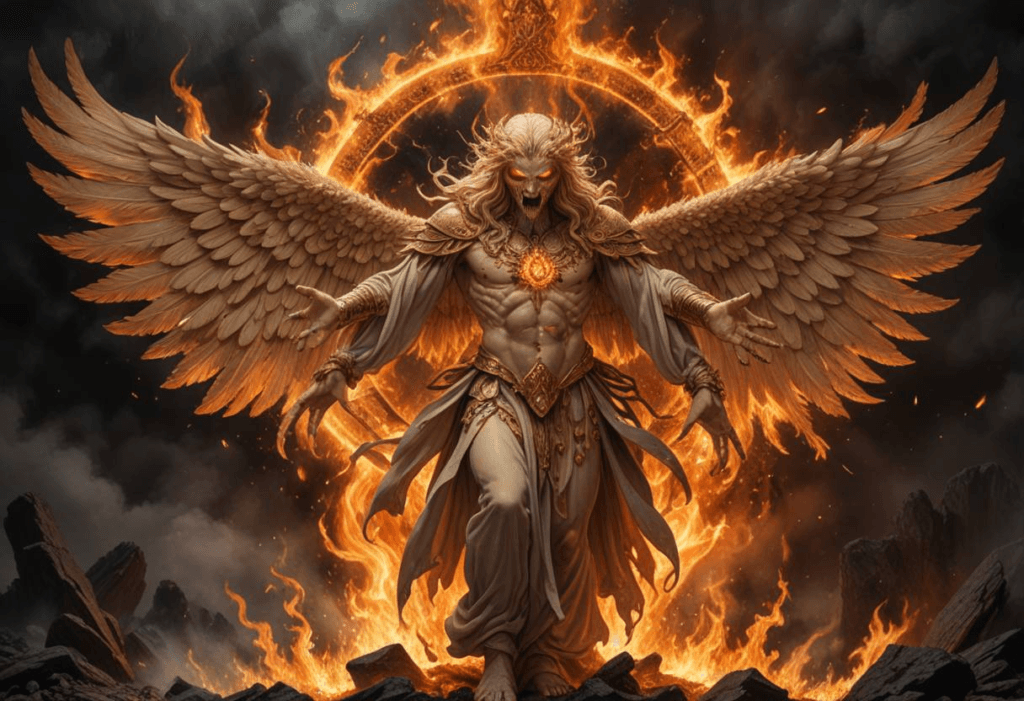
A different sort of angelically correct biblical angel is described in the book of Isaiah: the Seraphim. These angels appear in Isaiah 6:1-7, wherein the great prophet has one of his visions of God seated upon a throne and surrounded by Seraphim. The Seraphim are described as having six wings: two covering their faces, two covering their feet, and two for flying.
The name “Seraphim” is derived from the Hebrew word “saraph,” which means “to burn.” This led scholars to deduce that the Seraphim are fiery, shining creatures, a representation of purity and the judgment of God. In Isaiah’s vision, one of the Seraphim touches the prophet’s lips with a live coal, purifying him and preparing him to deliver God’s message to the people of Israel.
The presence of the Seraphim is both a beautiful and terrible image; the appearance of fire and their position near God’s throne suggest that they are at once worshippers of and enforcers of the divine will. As biblically correct angels, they epitomize the overwhelming holiness and power of God.
Thrones and Ophanim: The Wheels of the Divine Chariot

Another interesting group of biblically correct angels includes Thrones, better known as Ophanim. These angels appear in the Book of Ezekiel; their description there goes: wheels inside wheels, full of eyes, and shining like topaz. Thrones are then associated with the divine chariot, carrying God’s presence and being his throne.
The Imagery of the Thrones is intensive and symbolic. Wheels within wheels speak of a multidimensional nature, the eyes denote all-seeing awareness. The Thrones, in the capacity of biblically correct angels, often represent the divine order and traffic of God’s will throughout the universe.
Among the biblically correct angels, the Ophanim are peculiar because they are not anthropomorphic creatures of any kind. They are purely symbolic expressions of divine power and authority. Their presence in Ezekiel’s vision is one element in an otherworldly, incomprehensible vista, fraught with mysterious entities who bear no resemblance to any recognizable class of beings and are even beyond normal physical comprehension.
New Testament Biblically Correct Angels
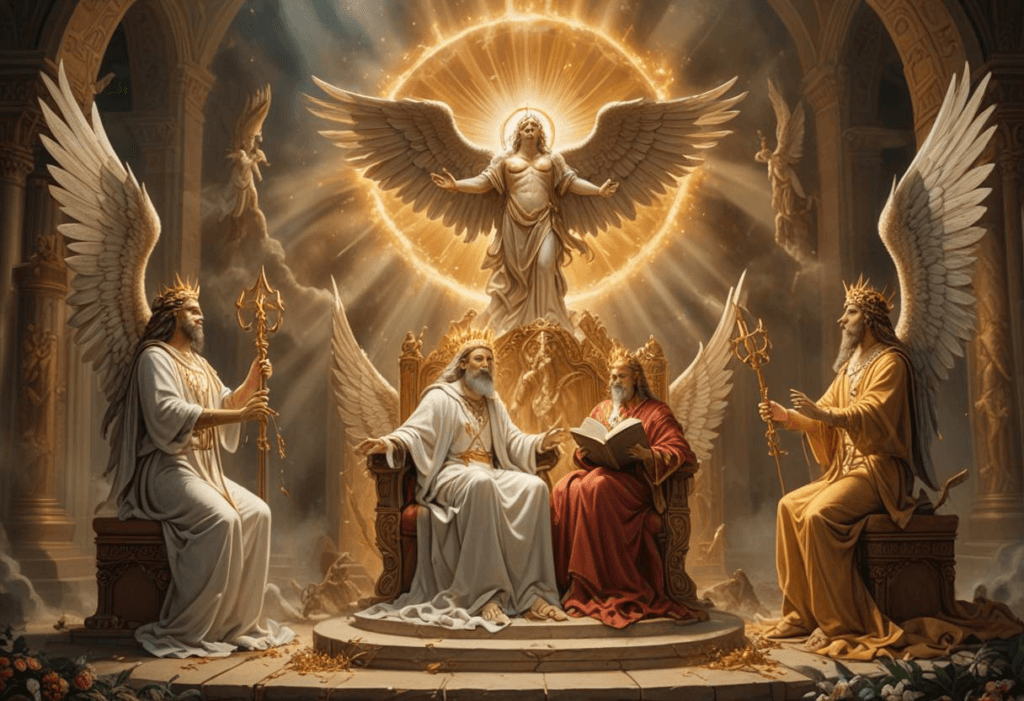
While the Old Testament provides a better description of biblically correct angels, there are also insights in the New Testament regarding the nature and mission of the angels. In the Book of Revelation, the Apostle John speaks about the diverse angels ministering around God’s throne, especially the four living creatures, and the seven angels blowing their trumpets of judgment.
The angels in Revelation appear as mighty beings commissioned to carry out God’s will during the last times. They are associated with disasters, plagues, and many other manifestations of God’s judgment. These biblically correct angels are not just heralds but also the carriers of God’s punishment, underscoring their function within the development of the divine plan.
It was in the New Testament that guardian angels appeared, watching over and protecting believers. These angels, in contrast to those in the Old Testament, were less elaborately described, since in this case they had a role to perform regarding doing God’s will in earth matters.
Biblically Accurate Angels Animation: Bringing the Divine to Life
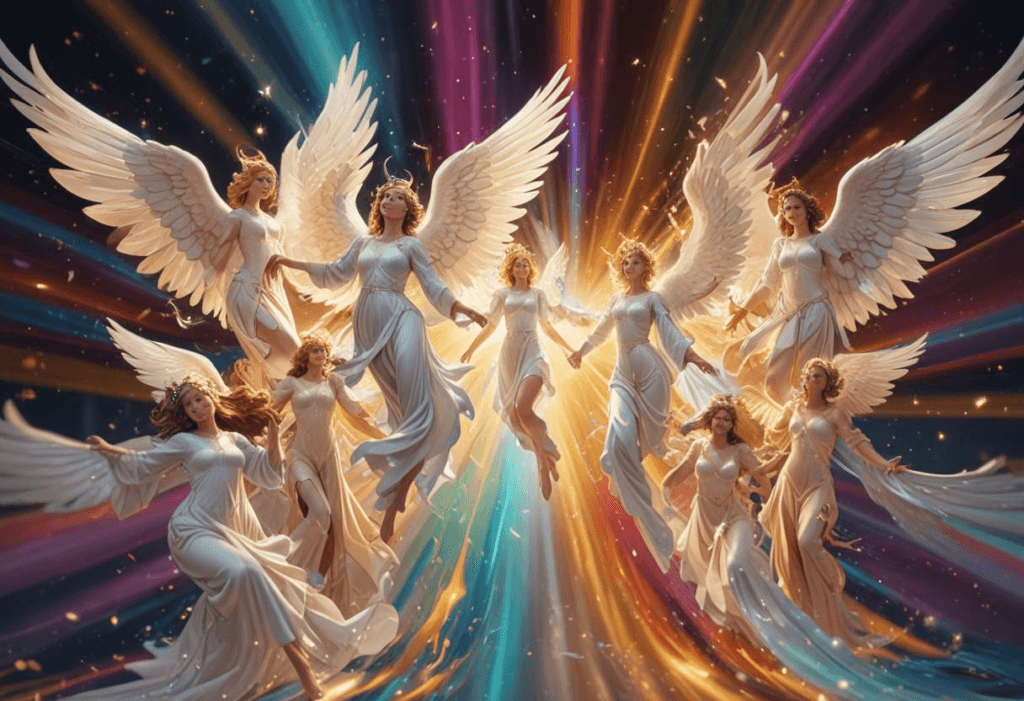
But of late, the idea of biblically accurate angels has taken on a life of its own in many forms of media, especially in animation. Biblically accurate angels animation tries to give life to the astounding and sometimes fearsome descriptions of angels so that the viewer gets a glimpse of the divine mysteries as told in the Bible.
The most challenging thing in creating biblically correct animation of angels is to express that otherworldly character these creatures possess. The banal presentation of the angels as some generally winged human figures does not suit their complex and symbolic descriptions in scripture. Rather, biblically accurate animation requires much creative technique to bring out multi-faced, multi-winged, eye-covered forms of biblically correct angels.
With the rise of digital animation comes the birth of more vivid and realistic illustrations of biblically accurate angels. Most animations capture the rich imagery of the Bible through the use of color, intricate design, and dynamic movement to illustrate the majesty and mystery of these creatures of heaven.
Biblically correct angels animation is the method of visualizing from the Bible and also about deeper symbolism and meaning behind these images. By bringing these angels to life, animators invite viewers into a reflective mode in which one ponders on the nature of the divine and also the role that these beings play in God’s plan.
The Symbolism of Biblically Accurate Angels
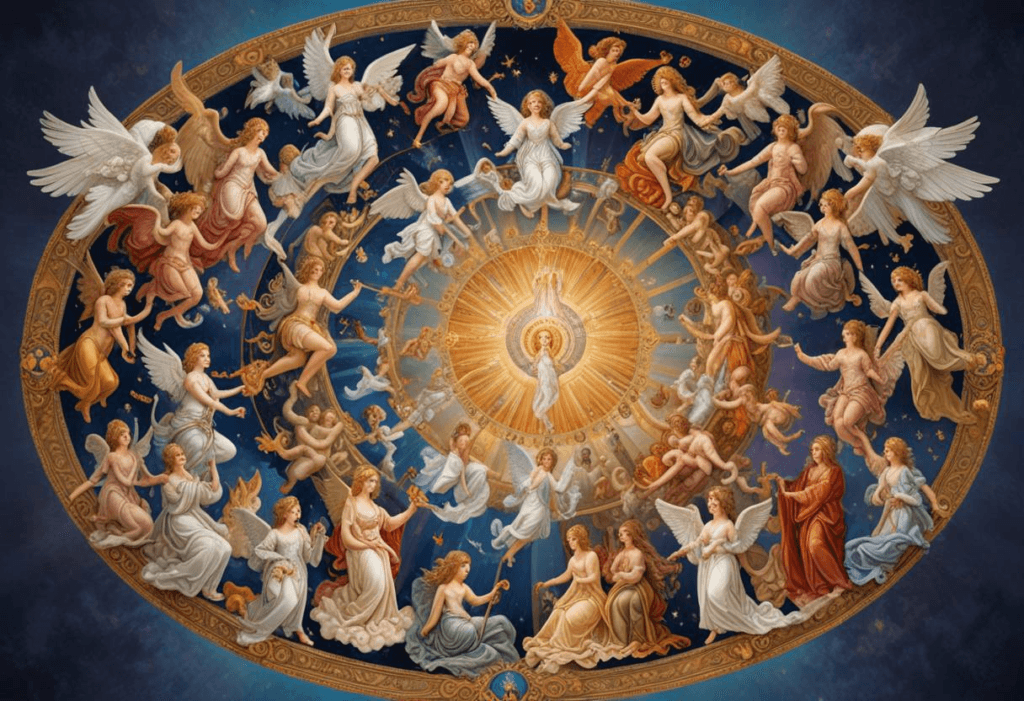
The depictions of the biblically correct angels in the Bible are full of deeper symbolic meanings, referring to complexity and multi-dimensionality in the nature of God’s creation. Every angelic order speaks to an aspect of the divine: from the all-seeing Cherubim to the fiery Seraphim to the multidimensional Thrones.
One of the important themes in the symbolism of biblically correct angels is that of divine order. The angels are often represented as performing certain functions in the heavenly order and, in so doing, carrying out the will of God with precision and authority. Their aspect, their motions, and their actions are all indicative of the fact that God’s creation, though maybe incomprehensible to mortal men, is ordered and purposive.
Another recurring theme is that of divine judgment. Many of the precise biblical angels commit acts of judgment, whether it be the Seraphim that cleanse Isaiah with a live coal or the angels in Revelation that carry out God’s judgment on the earth. These angels serve to remind one of the severity of sin and the reality of God’s justice.
Meanwhile, the biblically correct angels continue to speak of God’s mercy and anxiety over his creation. God’s love and concern for humanity can also be appreciated in the Cherubim at the door of Eden, guardian angels watching over believers, and angels bringing messages of hope and redemption.
Biblically Correct Angels in Art and Culture

The concept of biblically correct angels has also made its way into art and culture, challenging artists to move away from traditional depictions and create works that do justice to the complex, and sometimes terrifying, nature of these beings.
In recent years, there has been a surge of interest in these more accurate depictions, particularly in religious and fantasy art. Artists have turned to the descriptions of angels in the Bible as inspiration for creating striking and thought-provoking works that capture the mystery and awe of these beings.
Conclusion: Embracing the Mystery
Biblically correct angels continue to evoke awe, fear, and fascination. They are a reminder of the complexity and vastness of the divine, a challenge to our limited understanding of God and the unseen world. By delving into the biblical descriptions of angels, we are invited to confront the mystery of God’s creation, to embrace the unknown, and to stand in awe of the holy and the divine.
In a world that often seeks to simplify and domesticate the spiritual, the study of biblically accurate angels offers a refreshing and humbling reminder of the greatness of God and the mystery of the divine. It invites us to look beyond our conventional ideas and to be open to the profound and the mysterious.
